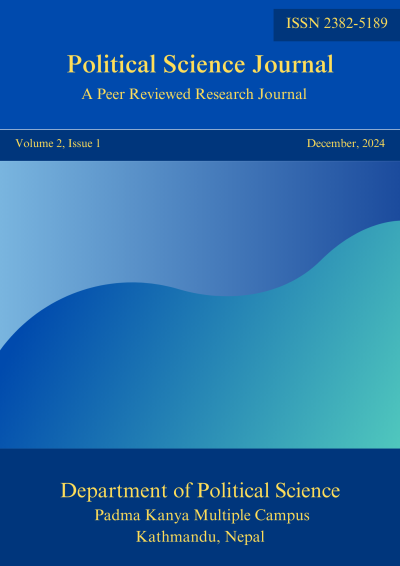State of Customary Governance System in Nepal: A Review
DOI:
https://doi.org/10.3126/psj.v2i1.75116Keywords:
Indigenous Peoples, Customary Governance, Customary Law, Customary Institutions, Decolonization, Self-ruleAbstract
This article is based on the review of scholarly works on customary governance systems of Indigenous Peoples (IPs), prevalent in different communities, despite legal, political, and social adversaries, in Nepal and state imposed legal frameworks for "regulating" those self-governing traditions. Diverse online and physical sources were utilized to locate and acquire scholarly articles and the final set of literature pertinent to this review was determined using the PRISMA flow diagram. Legal instruments are selected purposively. The research questions addressed in this study are: What are the legal instruments that recognize IPs' customary governing systems in Nepal and to what degree those instruments ensures self-rule and autonomy? How self-rule and autonomy is exercised among IPs of Nepal? How customary governance systems interact with state governance systems? The core attributes of customary governance systems include collective leadership selection, participatory decision-making, and non-hierarchical power relations, unlike the state-embraced individualism, representative procedure, and hierarchy-based structure. After the promulgations of the 2015 federal Constitution, municipal governments, both rural and urban, started to acknowledge the customary system of governance of IPs enacting local legislations. Those state legislations, however, are driven by the assimilationist approach, tending to bring such systems under the jurisdiction and structure of the state rather than ensuring their autonomy and self-rule. Thus, IPs' demands and advocacy for legal recognition of customary governance system should be guided by the notion of de-Hinduization, de-Sanskritisation, de-Nepalization, and de-Brahminization to prevent NGO-ization and (political) Party-ization of their customary institutions and preservation of their distinct forms of self-rule.




